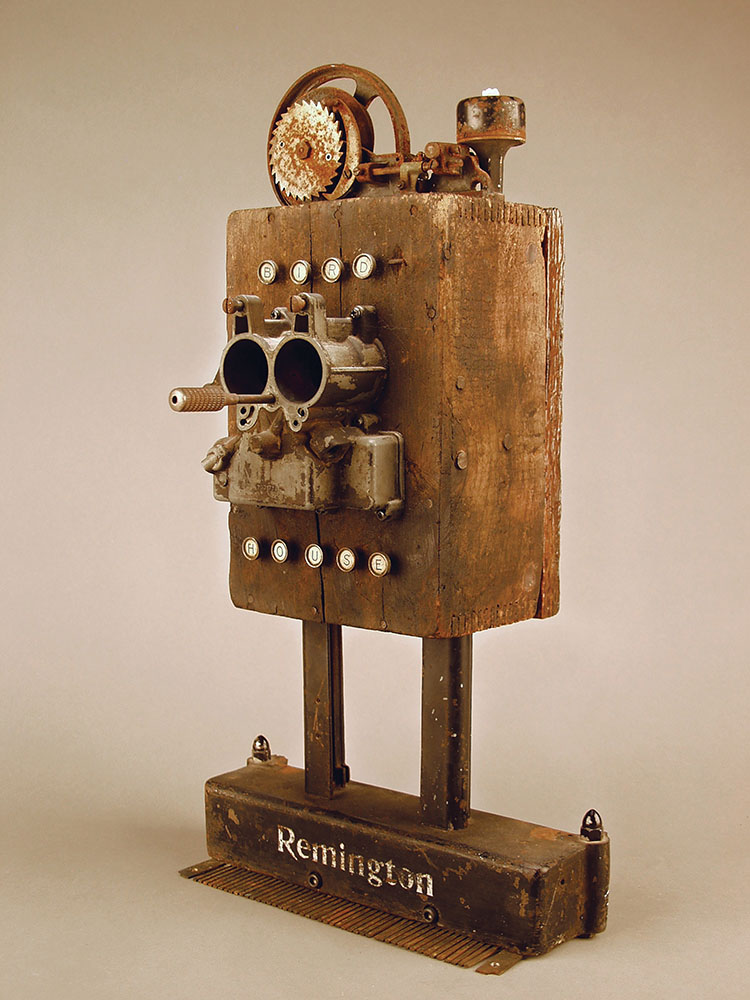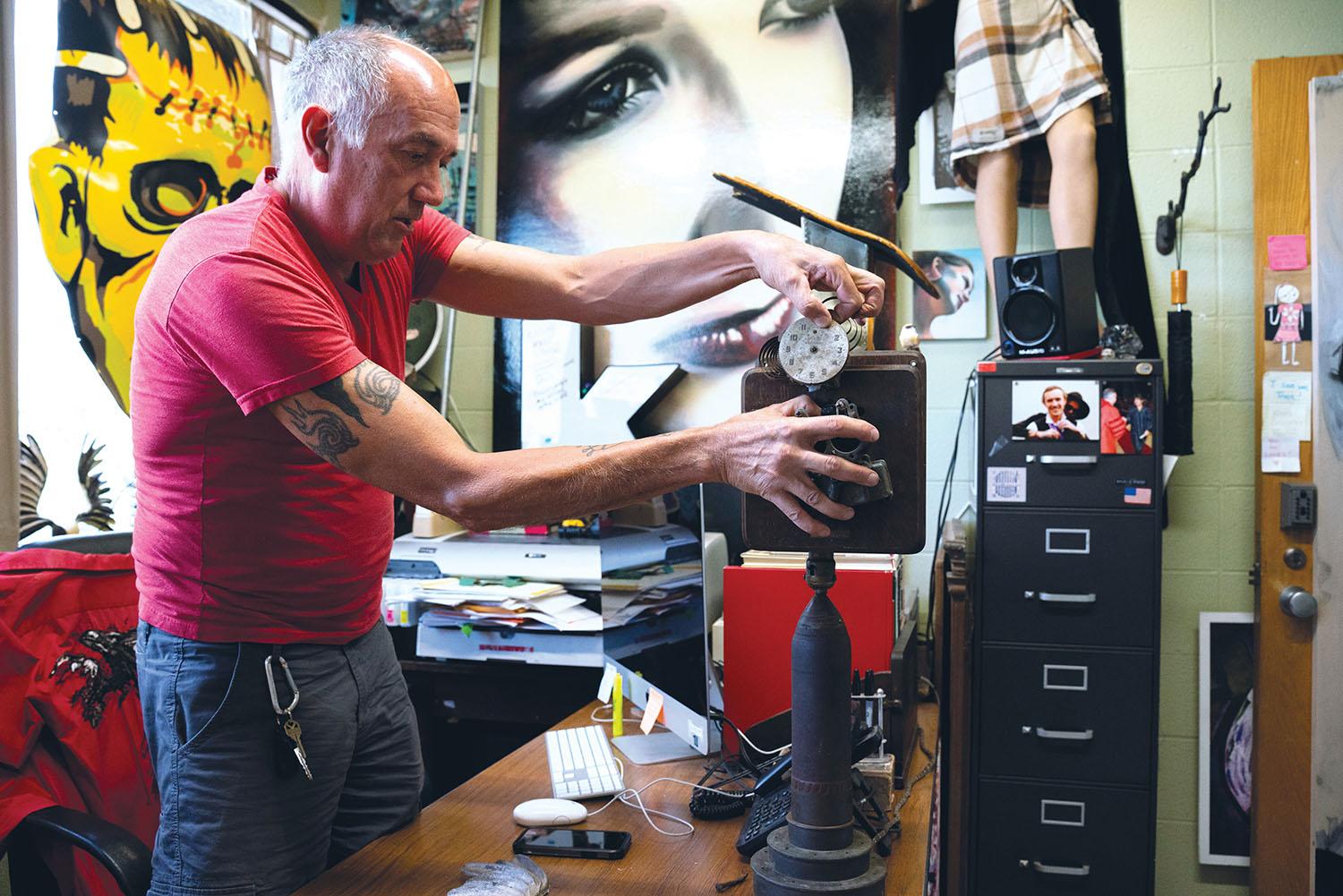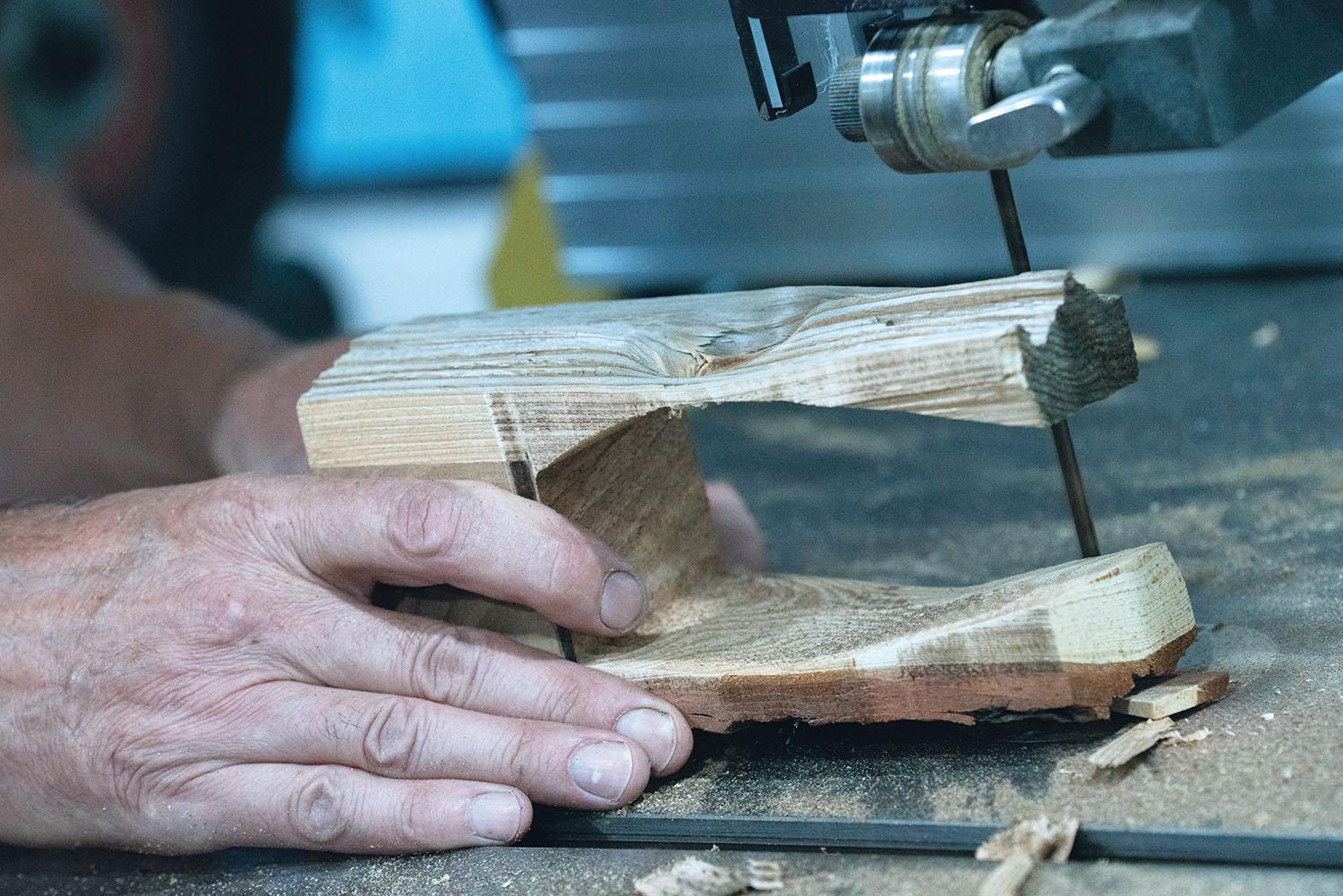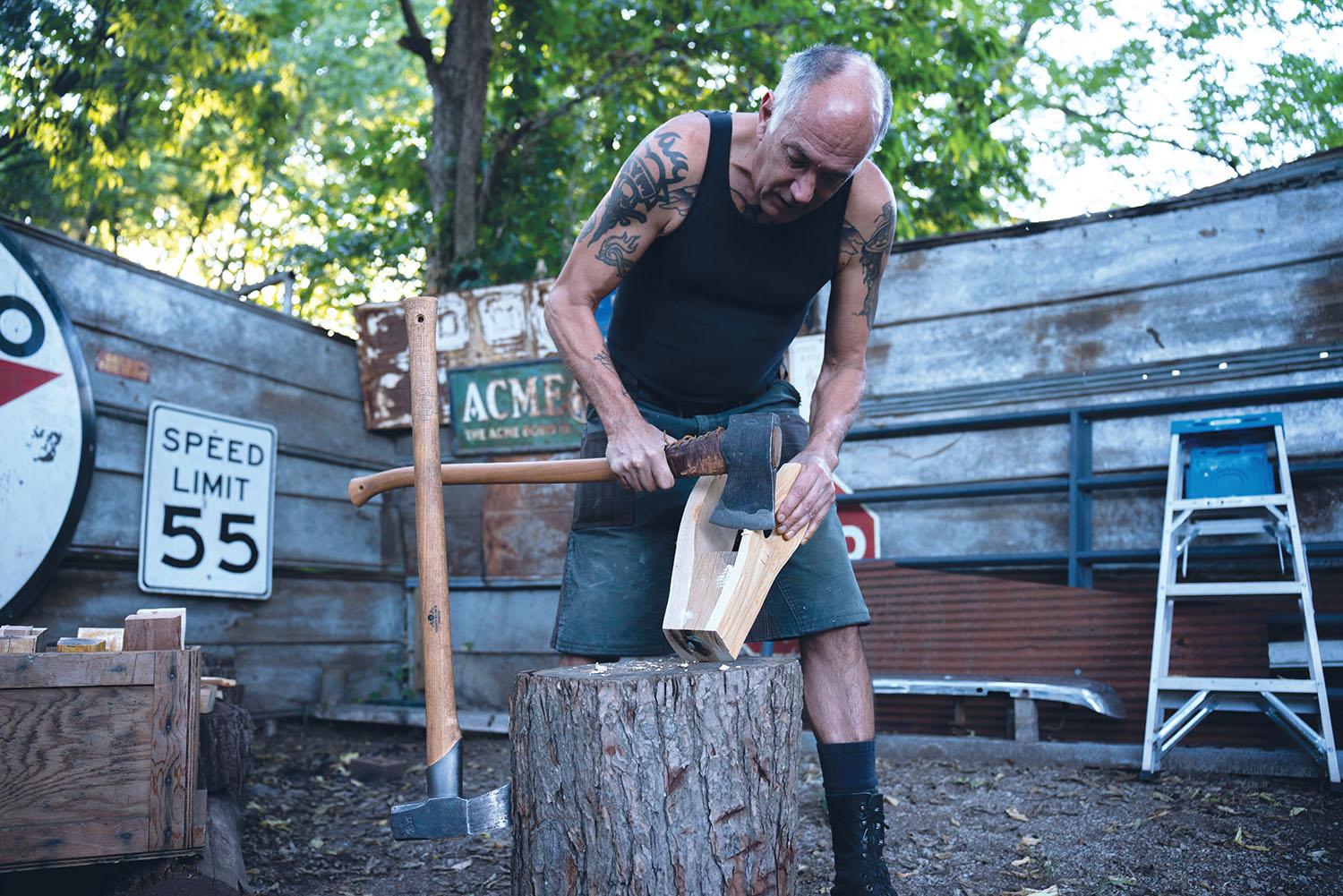Story by Rachael Ousley and Cailyn Richer
Matt Tullis has been teaching graphic design at WKU for the last 23 years. However, his craft is not limited to digital art. Beyond the classroom, Tullis can be found in his backyard chopping away at a cedar tree or rummaging through antique bins in search of the perfect perch for his next birdhouse sculpture.
Matt Tullis said wood is a key element within his artistic process. He said he first looks for wood with naturally occurring knotholes, which serve as the “door” to the birdhouse, and he then moves onto chopping the wood.
Regardless of this criteria, each piece of wood is unique, Matt Tullis said.
“Different kinds of wood present different opportunities,” he said. “I never know when the swing of an ax will result in something special, and when it does, it’s always exciting.”
Growing up in Eugene, Oregon, Matt Tullis and his family, who were involved with Boy Scouts, spent much of their time outdoors. He said creating birdhouses and working with wood is a process that he has enjoyed since childhood, having received his first chainsaw at age 13.
Matt Tullis said the current series of birdhouses he is constructing are made from the backings of old stadium chairs that were originally going to be discarded. With his birdhouses having featured items such as a Chevrolet carburetor, a cast-iron shoe stretcher and more, he said his passion lies in collecting items that some may consider to be garbage and repurposing them into artwork.
“I love stuff like this, and it’s hard for me to get rid of it,” Matt Tullis said. “Birdhouses are … like a thing for me to just say, ‘I’m going to hang onto that and turn it into something functional.’”

Matt Tullis and his daughter, Tressa Tullis, view antiquing and rummaging through old junk as a favorite pastime.
Like her father, Tressa Tullis has a love for typography, which is what inspired her venture into illustration. Although she works full-time as a business analyst, she also spends her time illustrating children’s books for her nephew.
“The aspect of it that we both love is that it just ties together a message and elevates it,” she said.
Tressa Tullis said that one of her father’s most admirable features is his resourcefulness when creating art, which is a quality she said she tries to reflect within her own projects.
“It’s inherent in my approach to most things,” she said.
Tressa Tullis said her father approaches art through being flexible and original rather than prescribing to a rigid process, which inspires her approach to her projects, whether they are work-related or creative.
“Try and build something adaptive, not prescriptive,” she said. “That’s kind of how my dad makes his sculptures and his art.”
This artistic process is something Matt Tullis has maintained throughout his career.
Matt Tullis earned an undergraduate degree in fine arts with a graphic design emphasis from Oregon State University. He earned his master’s of fine arts from the Tyler School of Art and Architecture before working as a designer for 12 years and eventually teaching at WKU.
Matt Tullis said that despite his background in digital art, he wanted to venture into the physical art space.
“I think what I need to do for my own creative soul is to step away from the computer,” he said.
However, he said he struggles with impostor syndrome regarding his creation of physical sculptures.
“I’m a typographer; my design … is all about typography,” Matt Tullis said. “So how do I bring that into the 3D art realm, and then how does that affect, you know, these birdhouses that I have been making since I was little?”

Matt Tullis said he feels most inspired to step outside of his comfort zone by getting inspiration from his WKU colleagues.
“I’m surrounded by other artists, sculptors and painters,” he said. “It encourages me to explore more with the fine arts, like sculpture. I was inspired by the artists around me to try some new things and do new things of my own.”
Matt Tullis said that being a part of an artistic community bridges the gap between his background in graphic design and his passion for 3D art.
Combining physical and digital art is a skill that Matt Tullis teaches within his graphic design classes. Shifting between the two elements within a 300 level design course presented a challenge to Cameron Tutt, a WKU alumnus and former student of Matt Tullis.
Tutt currently works as a graphic designer full time, and attributes much of his success to what he learned within Matt Tullis’ classes.
“He felt like an artist I could connect to,” Tutt said.
Matt Tullis said he bases his lessons on what he’s interested in researching or collaborating on and creates his lesson plans through that viewpoint.

Tutt said finding balance between physical elements and digital art differed greatly from his personal artistic taste but also pushed him to grow as an artist.
“I was in the mindset of, ‘Newer is better’ and kind of neglected bringing in some of those more traditional elements,” Tutt said.
Tutt said Matt Tullis’ constructive criticism and openness to many different types of artistic styles in class influenced him throughout his career.
“My students influence my artistic process everyday,” he said. “If I can come up with projects that I’m super excited about, then I’m not that far away from being a student myself.”
Whether he is creating digital art or birdhouses, Matt Tullis said that it is important to challenge himself to make art that is uplifting and positively represents the things he is passionate about.
“I believe it’s harder to make art and design that is both impactful and beautiful,” he said. “I think it’s easy to make something that’s mean or ugly, or mean-spirited. So, I tried to make art that makes my own little piece of our world more beautiful.”



